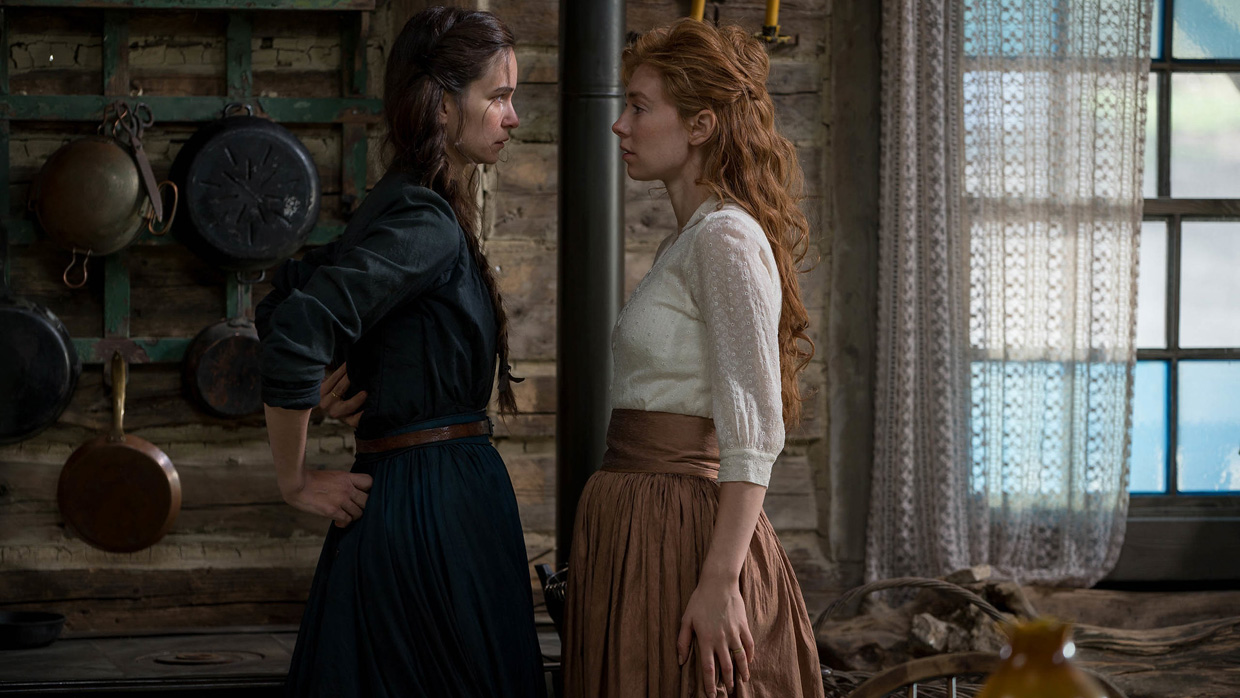 Back to selection
Back to selection
“Treat the PTSD That Comes from Filming”: Editor Dávid Jancsó on The World to Come
 The World to Come
The World to Come Director Mona Fastvold’s second feature film The World to Come is an adaptation of a Jim Shepard short story of the same name. The film follows Abigail (Katherine Waterston), a well-read 19th century wife living in upstate New York who has grown frustrated with the humdrum of provincial life. She soon begins a love affair with her new neighbor Tallie (Vanessa Kirby). Editor Dávid Jancsó tells us of the film’s meticulous editing style, the influence of Daniel Blumberg’s score on the process, and his prior collaborations with Fastvold.
Filmmaker: How and why did you wind up being the editor of your film? What were the factors and attributes that led to your being hired for this job?
Jancsó: We have bonded with Mona over the film we had worked on with Brady Corbet (The Childhood of a Leader) many years ago. We had such great collaboration that it was almost natural that we continued to work together ever since.
Filmmaker: In terms of advancing your film from its earliest assembly to your final cut, what were your goals as an editor? What elements of the film did you want to enhance, or preserve, or tease out or totally reshape?
Jancsó: The primary goal is always to help the director’s vision come through. Treat the PTSD that comes from shooting and provide for a creative process where we are able to try whatever is necessary for the movie to become a whole. As with all good directors, Mona brought more elements to the edit that provided us with a chance to form the film’s pace and story to our choosing. Along with Daniel Blumberg’s exceptional music we were able to allow the picture to play back and forth with the score.
Filmmaker: How did you achieve these goals? What types of editing techniques, or processes, or feedback screenings allowed this work to occur?
Jancsó: We were lucky to have had a chance to return and shoot the winter scenes mid-editing so we were able to pinpoint some extra needs and form some remaining scenes to match or supplement the film we already had in hand. Also music played a huge role in setting the tone and worked parallel with the composer to perfect the film’s musicality. We had few, but very effective feedback screenings and received positive responses all the way through the process.
Filmmaker: As an editor, how did you come up in the business, and what influences have affected your work?
Jancsó: I was born into a filmmaker family and although my parents tried everything to keep me away I managed to return to my roots in the end. There are so many influences that’s its hard to list them all. Definitely the works of Ray Lovejoy, Thelma Schoonmaker, Pietro Scalia, Leo Catozzo, Roberto Perpignani, and of course Zsuzsa Csakany among many others have been an inspiration to this day.
Filmmaker: What editing system did you use, and why?
Jancsó: Having gone through most systems for certain projects I always return and prefer to work on AVID’s MediaComposer. Mostly choose it for its unrivaled shared project functionality. I have inherited a mentality that regardless of project size it is essential to have an assistant or trainee working in parallel as it was the case in the flatbed era, when I was stealing fallen frames off my mom’s edit room floor only for her to go looking for them tirelessly. I thus have a deeply rooted connection to teamwork. Editorial’s most important job for me with my crew is to throw around ideas and see what sticks. The system allows us to do just that. Oh, and there is ScriptySync. Can’t live without it.
Filmmaker: What was the most difficult scene to cut and why? And how did you do it?
Jancsó: The oath of secrecy of the edit room will always prohibit a full response to such a question. As a rule of thumb most times, the “easiest” of scenes to the viewers eyes have been the most cumbersome to perfect. Thanks to editing being the invisible art of filmmaking these are in many cases never noticed nor get attention. I have been lucky with working with fabulous editorial crews all my career and with their help have always been able to build up for example soundscapes already in the offline that helped advance the films to a great degree.
Filmmaker: What role did VFX work, or compositing, or other post-production techniques play in terms of the final edit?
Jancsó: We did have a surprisingly large amount of VFX compared to what one might imagine. VFX is now an integral part of the process. Many times we have used it to perfect the performances by retiming pacing or adding new stylistic elements to the film. It is always essential to find a creative and dedicated VFX team who are true collaborators.
Filmmaker: Finally, now that the process is over, what new meanings has the film taken on for you? What did you discover in the footage that you might not have seen initially, and how does your final understanding of the film differ from the understanding that you began with?
Jancsó: Editors are one of the luckiest creatives in the industry. We immerse ourselves in worlds for months, live through our characters’ emotions on a daily basis, and get acquainted with minute details that are barely noticeable to a one time viewer. We come out being wiser and stronger every film and I am eternally grateful for it every single time.
